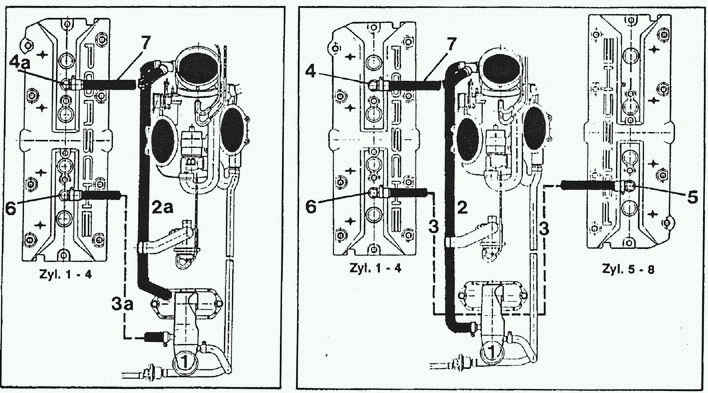
ok, to the topic of crank breathing system in a Porsche 928:
In models S4/GT has a combined crank breather system, which has both a Main
breather system, and a safety breather system:
A) Main breather system:
At the main breather system gasses from the crankcase are transferred from the
crankcase to the lower part of the oil filler neck , and from there via a hose
without any safety valve directly to the right cylinder bank (US driver side).
In the valve cover an oil separator exists to loose most of the oil, and
then via a angled connector piece with a valve (hose) to the intake valve
assembly where the remaining gasses are is sucked in and burnt.
B) Safety breather system:
At the Safety breather system gasses from the crankcase are also fed into the
foot of the oil filler neck, but from there directly via a connection with a
safety valve directly into the intake valve assembly.
Function of this Safety system:
The safety breather system ensures that if for any reason the passage via the
normal route is blocked (like buildup of ice) the safety valve opens based on
the pressure difference and allows the pressurized gasses to escape to the valve
body. The safety valve opens at a pressure difference of 0,08 to 0,1 bar.
Ok this is theory. If this icing of the hoses ever happens remains to be seen.
If the disabling of the safety system by plugging
the hose with a screw or so could ever cause any defects is unclear. With a
disabled safety system there should be no problem in normal circumstances.
Porsche apparently closed this line at some cars to eliminate gasses with oil
escaping via the safety route, bypassing the oil separator, and consuming more
oil than usual. This is just assumption and not good practice to
eliminate oil consumption.
======
Here is a picture of the later model (GTS) oil breather modification:
